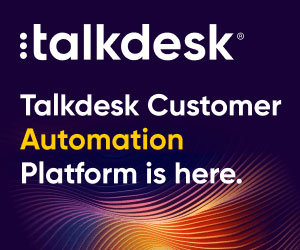As organizations of every size navigate and customize their digital transformation journey, moving business communications to the cloud has emerged as an urgent, pivotal strategy for IT leaders and Chief Information Officers (CIOs) who are aiming to enhance operational efficiency, flexibility, and scalability.
The move to cloud-based communications, however, is not without its challenges and intricacies. To ensure a smooth transition and to harness the full potential of cloud communications, IT leaders and CIOs must approach this move with a strategic mindset.
Whether your organization is a small business or scaling upward, Tricia Morris at 8×8 explains five essential considerations from a CIO’s point of view when migrating business communications to the cloud.
1. Assess Organizational Needs and Goals
The first step in any technology selection or transformation journey is a thorough assessment of an organization’s current state and its vision for the future. CIOs must understand the specific needs, challenges, and goals of their organization at the granular level.
This includes evaluating the existing communications infrastructure, identifying gaps in capabilities, and defining what success looks like post-migration.
By aligning the move with organizational objectives, whether it’s improving the customer and/or employee experience, fostering collaboration, or reducing costs, IT leaders and CIOs can ensure that the cloud solution chosen not only addresses current goals effectively, but can scale to meet future ones.
Organizational leaders should be sure to research and leverage industry analyst reports and peer review sites to ensure providers aren’t just talking the talk, but can effectively deliver when it comes to business success.
2. Give Careful Consideration to Key Capabilities
As unified communications has become increasingly commoditized, the market is now flooded with cloud communications providers, each offering a myriad of features and benefits. Selecting the right cloud service provider is crucial, but here are several factors that demand scrutinized evaluation:
- Reliability and uptime guarantees: Ensure the provider has a track record of high availability and robust disaster recovery plans.
- Security and compliance: Ask about the provider’s comprehensive security measures and how it complies with all relevant regulations and standards.
- Scalability and flexibility: Make sure the solution being evaluated has the ability to easily scale up or down and is customizable as the organization’s needs evolve.
- Integration capabilities: Question how seamlessly the provider’s platform can integrate with existing business applications and workflows, as well as desired ones.
3. Ensure Seamless Integration and Interoperability
Let’s take a deeper dive into integration capabilities. A successful migration to cloud communications often hinges on the solution’s ability to integrate seamlessly with the organization’s existing technology stack. This includes everything from CRM solutions, to productivity tools, to analytics platforms.
IT leaders and CIOs must ensure that the chosen cloud communication solution can not only coexist with these systems but also enhance their functionality.
Interoperability across different platforms and devices is essential to provide a consistent and efficient user experience, facilitating smoother communication and collaboration across the organization.
Even for small businesses, it’s vital today to also ask about integrations with CPaaS capabilities, cloud contact centre, and artificial intelligence.
These will be some of the most important integrations to help small and medium-sized businesses scale faster and use automation to their advantage.
4. Prioritize Security and Compliance
Moving communications to the cloud introduces a new set of security considerations. Many companies are hesitant to move to the cloud because they hear and fear that it isn’t as secure as on-premises infrastructure. This is a dated misconception.
When moving to the cloud, however, CIOs must prioritize solutions that offer end-to-end encryption, data protection, and privacy controls. These are table stakes. Additionally, compliance with industry regulations such as GDPR, HIPAA, or CCPA, depending on the organization’s sector and location, is non-negotiable.
The chosen cloud communication provider should have a solid reputation for security and compliance, with transparent policies and practices that align with the organization’s cybersecurity requirements. Don’t settle for less when it comes to this consideration.
5. Plan for Change Management and Training
The technical aspects of migrating to cloud communications are only part of the equation. The human element—how employees adapt to and adopt the new system—is equally critical.
CIOs should develop a comprehensive change management strategy that includes clear communication, training programs, and support structures to ease the transition.
Solution providers should be evaluated based on their professional services offerings as well as their ability to customize their offerings and remain engaged as partners throughout the customer’s journey.
Business communications providers are large enough to be market leaders, but are still small enough to offer personalized training and professional services.
By actively engaging with employees and addressing their concerns, and then partnering with the solution provider on both concerns and goals, IT leaders and CIOs can foster a positive attitude towards the change, ensuring a smoother adoption process and maximizing the benefits of the new cloud communication system.
Conclusion
From small businesses to enterprise organizations, the move to cloud communications represents a significant step forward in an organization’s digital transformation journey.
By carefully considering these five aspects—organizational needs, provider selection, integration and interoperability, security and compliance, and change management—IT leaders and CIOs can navigate the complexities of migration and unlock the full potential of cloud communications.
This strategic approach not only enhances operational efficiency and collaboration but also positions the organization for future growth and innovation in an increasingly digital world.
This blog post has been re-published by kind permission of 8x8 – View the Original Article
For more information about 8x8 - visit the 8x8 Website
Call Centre Helper is not responsible for the content of these guest blog posts. The opinions expressed in this article are those of the author, and do not necessarily reflect those of Call Centre Helper.
Author: 8x8
Published On: 9th Apr 2024 - Last modified: 6th Dec 2024
Read more about - Guest Blogs, 8x8






 8x8 is transforming the future of business communications as a leading Software-as-a-Service provider of voice, video, chat, contact centre, and enterprise-class API solutions, powered by one global cloud communications platform.
8x8 is transforming the future of business communications as a leading Software-as-a-Service provider of voice, video, chat, contact centre, and enterprise-class API solutions, powered by one global cloud communications platform. 











